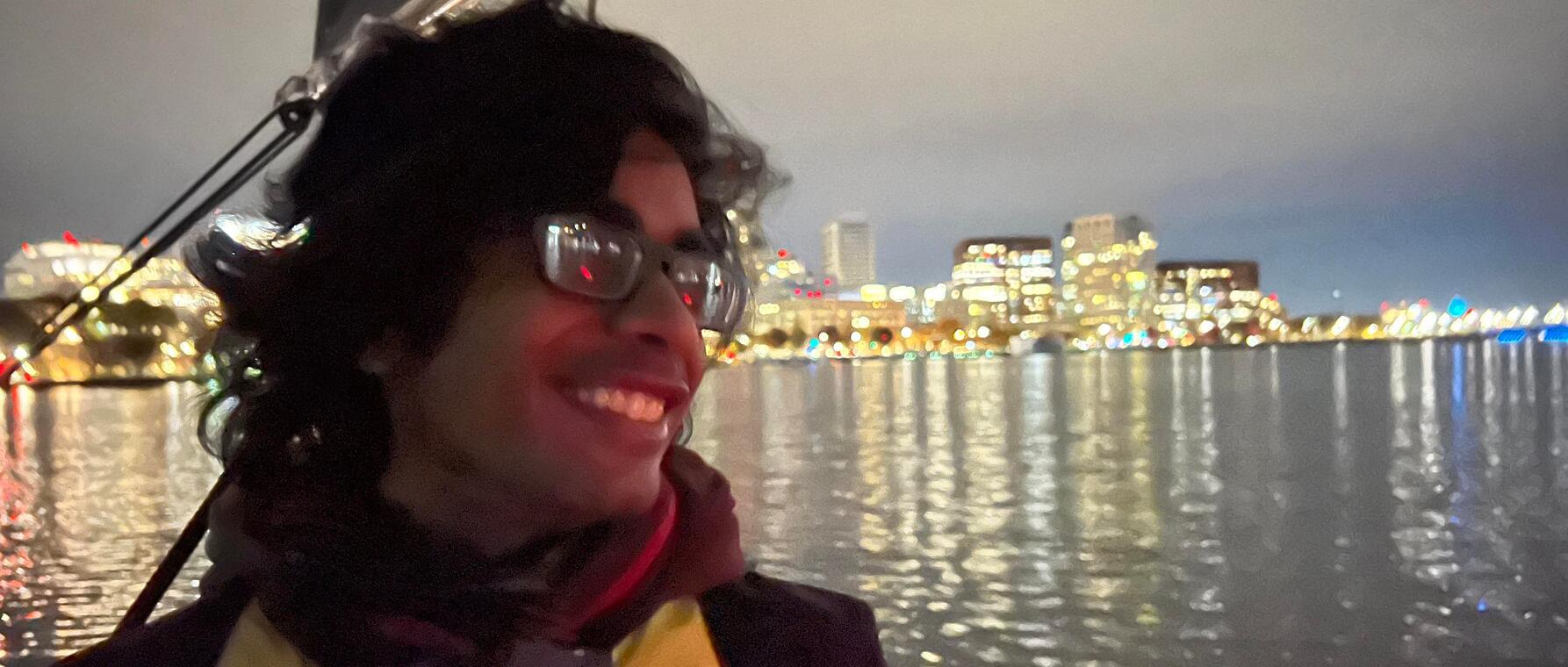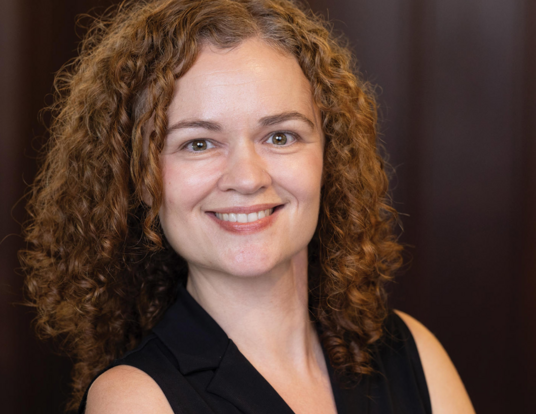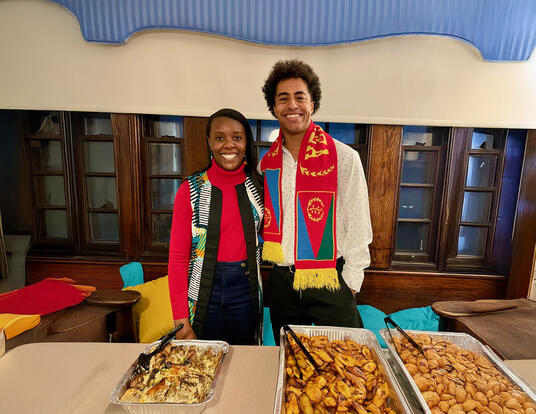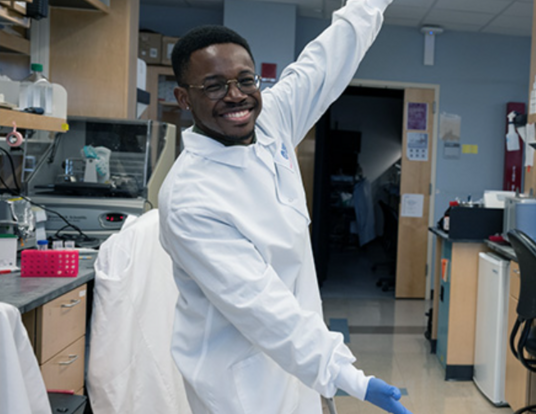A Study in Shapes
Harvard Griffin GSAS Voices: Sanath Devalapurkar, PhD Student

Sanath Devalapurkar is a graduate student at the Harvard Kenneth C. Griffin Graduate School of Arts and Sciences (GSAS), where he studies algebraic topology. Devalapurkar discusses what algebraic topology can tell us about shapes, how he became interested in studying it as a student at MIT, and the way he tries to convey his passion for math to the students he teaches.
An Amazing Gift
I have been interested in math for a while. I remember being a kid and visiting my grandpa in India, and every time we got off the train he would give me this huge collection of math books because he knew I was into that. I liked finding patterns and learning about abstract ideas. I ended up going to MIT for college, but I was at Harvard quite a lot, and there were also some Harvard people at MIT. There was a lively group working on algebraic topology, and soon I became interested in it.
When I was in my senior year, I attended a seminar on someone’s research and, afterward, there was an informal chat. One of the people participating in the discussion was Mike Hopkins, a professor in Harvard’s Department of Mathematics, who eventually became one of my advisors. He had this intuition, this way of thinking, that I wanted to try to understand. I had no idea what he was talking about, but the idea of understanding something so well that I could think like him was inspiring.
After hearing him talk, I went home and searched online to see what he worked on. Right after that, the pandemic happened. We started talking over Slack and Zoom. He became one of my advisors, and I started graduate school right in the middle of the pandemic. I think the isolation allowed me to delve into the math. I didn’t have any teaching duties, so I could spend all my efforts focused on research. That was an amazing gift for me.
Conversations between Algebra and Geometry
I work in an area of mathematics called algebraic topology, which aims to study shapes. Let’s say you have a geometric shape, and you want to understand some qualitative information about it. For example, you might have some mugs and want to know how many holes the mug has, which is one. Someone might then give you a more complicated shape with multiple holes, like a belt with many notches. They’re not the same shape, and you know this because one has only one hole and the other has multiple holes. But if two shapes have the same number of holes, that doesn’t necessarily mean they are the same shape; maybe they’re distinct in some more complicated way.
The question that algebraic topology tries to understand is whether, given a geometric shape, you can extract unchanging, or invariant, information from it that you can use to distinguish shapes. In the case of the mug and the belt, you could use holes as this information. You could try to extract some more complicated information, algebraic things like polynomials.
Weirdly enough, the algebraic invariants that you get also appear in completely unrelated parts of math for no good reason. It turns out that the property of the polynomials you extracted can say something about the geometry of the object you started with, or you could use the geometry of those objects to solve polynomial equations. There’s an interesting back-and-forth between algebra and geometry, called geometric Langlands duality, and I’m interested in this interplay.
Discovering the Delight of Teaching
I have two advisors, Mike Hopkins and Dennis Gaitsgory. Every time we speak, I get amazing insights from them—I “hear” them think. It seems second nature for them to analyze things the way they do and how they approach problems in general. Speaking with them and being a graduate student at Harvard has shown me what it really means to understand something.
I’ve also had the chance to teach and mentor. For the first time last fall, I taught a calculus class. There is so much that I need to learn about teaching, but one of the things I try to convey is my own passion for math. Something that made me feel amazing was when, midway through the semester, one of my first-year students came up to me and told me that they had previously never really understood why people liked math. They said that after coming to my class, they got it—they got why it’s fun to work out these problems. I’m delighted that I was able to impart my excitement about math to someone else!
Get the Latest Updates
Join Our Newsletter
Subscribe to Colloquy Podcast
Simplecast




